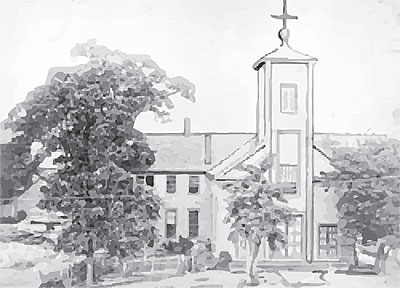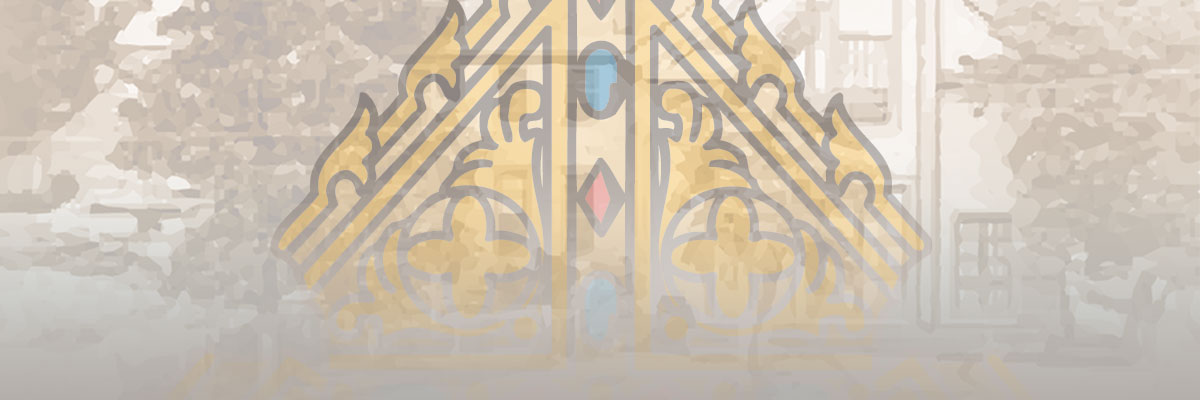Official Website of the
Catholic Diocese of Little Rock
Diocese of Little Rock celebrates 175 years
Published: November 28, 2018
The Catholic Church in Arkansas had very humble beginnings. The first Christian ceremony was held in a Quapaw Indian village near present-day Helena-West Helena in 1541. A dozen Catholic priests accompanying Spanish explorer Hernando de Soto lifted a cross and sang praise to God.
A Jesuit priest, Father Jacques Gravier, celebrated the first Catholic Mass in a Quapaw village on Nov. 1, 1700. St. Mary Church was built at Arkansas Post, at the mouth of the Arkansas River, in the late 1700s. It is believed to be the first Catholic church built in Arkansas.
 The first Cathedral of St. Andrew (above), at Second and Center streets in Little Rock, was consecrated in November 1846. The second Cathedral, was built across the street from the original and was consecrated in 1881. It remains the oldest church (of continuing worship) in the city of Little Rock.
The first Cathedral of St. Andrew (above), at Second and Center streets in Little Rock, was consecrated in November 1846. The second Cathedral, was built across the street from the original and was consecrated in 1881. It remains the oldest church (of continuing worship) in the city of Little Rock.
Father Ennemond Dupuy was the only priest living in Arkansas upon statehood in 1836. He built a new St. Mary Church along the Arkansas River, downstream from Pine Bluff, in 1832. The Sisters of Loretto opened St. Mary's Academy, the first Catholic school in Arkansas, at the parish in 1838. Because of continual problems with flooding, St. Mary Church was moved to its present location in Plum Bayou in 1869.
Pope Gregory XVI established the Catholic Diocese of Little Rock on Nov. 28, 1843. The first bishop, Andrew J. Byrne, was consecrated on March 10, 1844, in New York and rode into Little Rock on horseback with two other priests on June 4. The Irish-born bishop found a scattered Catholic population of possibly 700 across Arkansas.
Being formally established as a diocese did not make building the Church any easier. Bishop Byrne and all who labored with him and after him were confronted with many difficult challenges including extreme conditions, disease, poverty, war and anti-Catholicism. Slowly, churches, schools and hospitals were built by missionary priests, religious orders and immigrant lay Catholics. To learn more, read History of the Diocese of Little Rock.
Today, our mission diocese has grown to include more than 156,000 lay Catholics (registered parishioners), 134 priests, 102 permanent deacons and 170 religious men and women serving 128 parishes statewide. For more information, see Statistics on the Diocese, Former Bishops or History of St. John Catholic Center. Also visit Arkansas Catholic's timeline for the 175th anniversary or its Time Capsule 1911-2011.
Diocesan coat of arms reflects rich symbolism
 Visitors to this site might wonder why the crosses are upside down in the Catholic Diocese of Little Rock coat of arms. The small inverted crosses are a reference to St. Peter, the "petra" or rock, upon whom the Church was founded by Jesus Christ.
Visitors to this site might wonder why the crosses are upside down in the Catholic Diocese of Little Rock coat of arms. The small inverted crosses are a reference to St. Peter, the "petra" or rock, upon whom the Church was founded by Jesus Christ.
According to tradition, before he was martyred, St. Peter said he was not worthy to die in the same manner as Jesus. The Romans, therefore, crucified Peter upside down with his head pointed downward.
The coat of arms also includes a cross in the form of an "X" that represents St. Andrew, who was crucified on a X-shaped cross. St. Andrew is the patron of the docese's cathedral and the baptismal patron of Bishop Andrew Byrne, the first bishop of Little Rock (1844-1862).
The entire coat of arms has meaning to this diocese and its founding in 1843. It is composed of a shield topped with a gold miter. The miter is the ecclesiastical hat symbolic of the office of bishop.
The shield uses the Marian colors, white and blue. They honor Mary as the patroness of the United States under her title of the Immaculate Conception. The star of six points was taken from the coat of arms of Pope Gregory XVI, who established the diocese.




